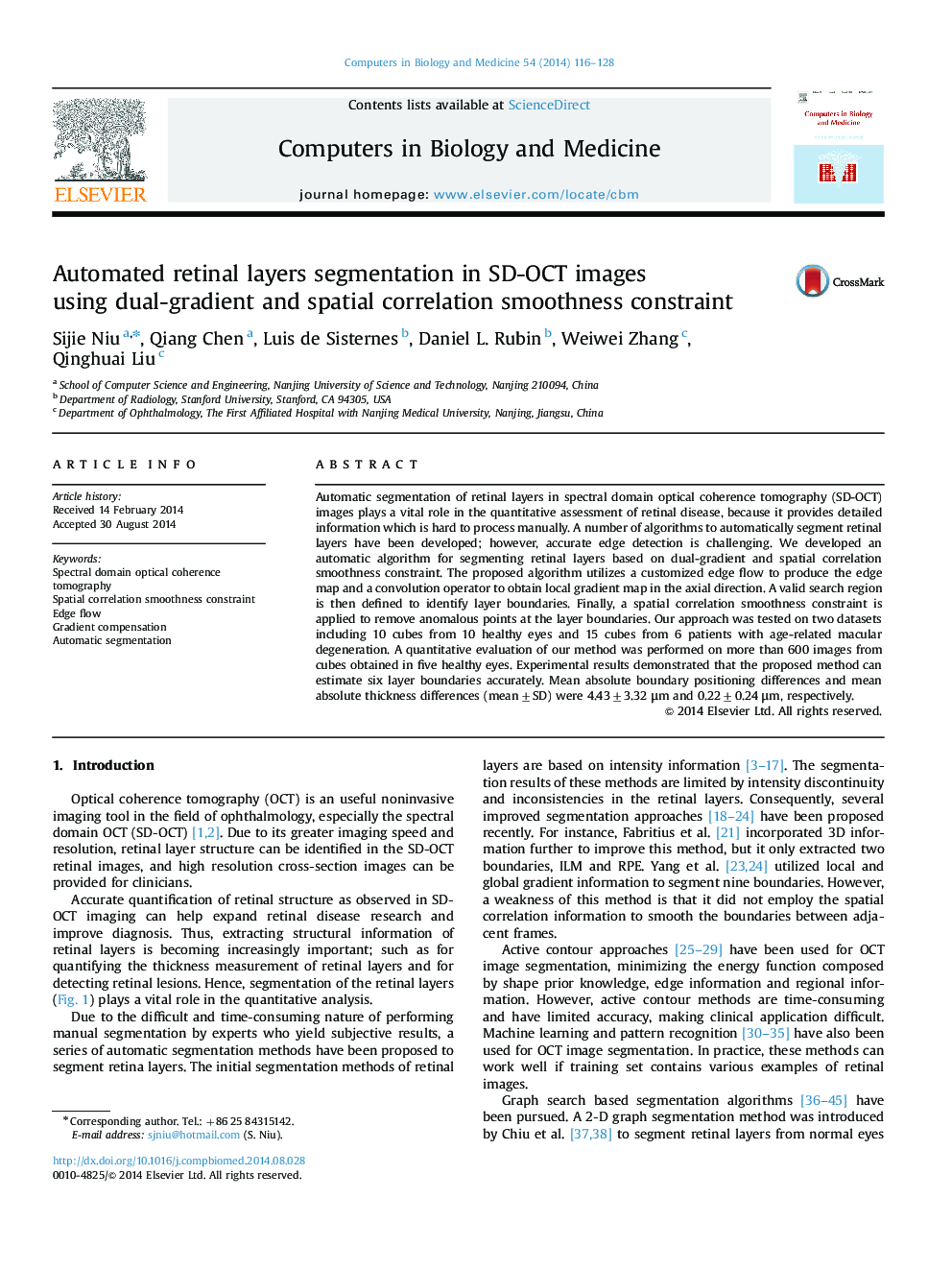| Article ID | Journal | Published Year | Pages | File Type |
|---|---|---|---|---|
| 504911 | Computers in Biology and Medicine | 2014 | 13 Pages |
•We develop an automatic method for segmenting retinal layers based on dual-gradient and spatial smoothness constraint.•Experimental results demonstrate the effectiveness of our method.•Qualitative and quantitative features extracted from images may be clinically useful for analyzing retinal diseases.
Automatic segmentation of retinal layers in spectral domain optical coherence tomography (SD-OCT) images plays a vital role in the quantitative assessment of retinal disease, because it provides detailed information which is hard to process manually. A number of algorithms to automatically segment retinal layers have been developed; however, accurate edge detection is challenging. We developed an automatic algorithm for segmenting retinal layers based on dual-gradient and spatial correlation smoothness constraint. The proposed algorithm utilizes a customized edge flow to produce the edge map and a convolution operator to obtain local gradient map in the axial direction. A valid search region is then defined to identify layer boundaries. Finally, a spatial correlation smoothness constraint is applied to remove anomalous points at the layer boundaries. Our approach was tested on two datasets including 10 cubes from 10 healthy eyes and 15 cubes from 6 patients with age-related macular degeneration. A quantitative evaluation of our method was performed on more than 600 images from cubes obtained in five healthy eyes. Experimental results demonstrated that the proposed method can estimate six layer boundaries accurately. Mean absolute boundary positioning differences and mean absolute thickness differences (mean±SD) were 4.43±3.32 μm and 0.22±0.24 μm, respectively.
Graphical abstractFigure optionsDownload full-size imageDownload high-quality image (274 K)Download as PowerPoint slide
